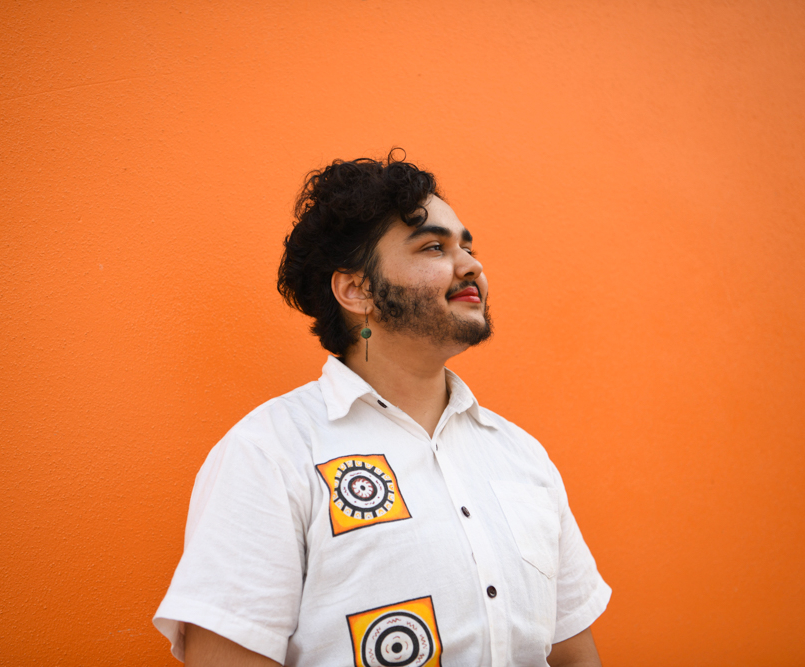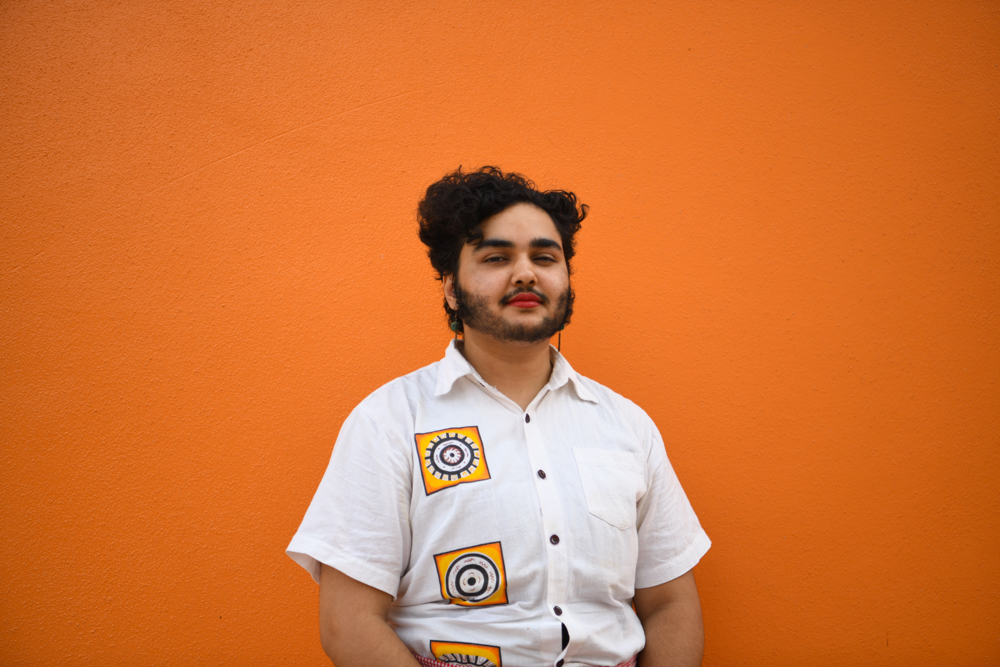Patrick Gunasekera

On The Table is an interview series with emerging writers from the 2019 Centre for Stories Inclusion Matters Hot Desk Fellowship. Here, writers reflect on their Hot Desk experience, the changes to their practice, and the connections they made.
Patrick Gunasekera is a queercrip Sinhala interdisciplinary artist based in the Whadjuk region of the Noongar nation, disrupting white and settler epistemologies of art through writing, visual media, performance-making and advocacy. He has been published in Voiceworks, Australian Poetry Journal, Seesaw, Pelican, and Wave After Wave, and is a contributor to the upcoming Black Inc. anthology Growing Up Disabled in Australia. He is currently working on his first play and his first poetry collection.
Please introduce yourself.
There’s a lot of ways that I can describe myself and I’m never quite sure where to start. I guess what is most relevant to the work I made during the Hot Desk Fellowship is that I am a poet and a dancer, I have always been in transit, and home has always been fleeting.
Can you tell us about your writing practice?
I work across many forms and thus employ a great many practices across the entirety of my creative and political work. I find it easiest to write when working toward a project, whether a collection of poetry for an exhibition or a book, or a single essay which is taking a lot of effort to produce and perhaps also with the hopes of having the piece published in a particular place.
The expectations I have on myself as a writer are eclectic and at times contradictory. Having a visual arts background, I end up thinking a lot about the elements and principles of design when I write (balance, emphasis, contrast, etc.). This puts me into a frame of mind that every facet of text I write needs to be a deliberate part of a whole. When I write I have the same feeling as when I draw or paint, in that I can sense when something is out of place and can lean into this intuition to discover what I need to do to make the piece a cohesive whole again. Because of this, I often expect my work to be perfect. But I am also constantly examining my work through a criticism of the settler colonial contexts in which it is being made, and seeking to write with a tongue that is unhinged in its brownness, queerness, and cripness.
Where did you start at the beginning of the Hot Desk Fellowship? What changed in your work and what did the Fellowship allow you to do?
At the beginning of the Hot Desk Fellowship I had 11 poems and the intention to make a poetry collection about, and through exploration of, the intersection of writing and dance. Very quickly however, it became apparent this collection really needed to be about brownness, and how this is tied to my body, my history, my sexuality and my future. There was a lot to think about, I remember telling people again and again how daunting it was to be adding my twenty-year-old voice to a millennia old discourse, especially around conversations about faith. I’m much obliged to the many queer and brown, and non-queer and brown colleagues and friends who I discussed this work with and who encouraged me to keep at it, particularly those of whom I shared the Centre with during the Fellowship.
Throughout the duration of the Hot Desk Fellowship, what changed for you in terms of practice?
One thing I learned was the benefit of having a designated space assigned to a writing project. This is something I had experience with around using rehearsal rooms to develop performances, or studio spaces to develop visual artworks, but it was the first time I’d employed this approach to creating a body of written work. From here I will be applying for many more writing residencies and fellowships, as there’s really only so much you can do from your bedroom or your local café.
How did you find the culture of the Centre for Stories?
Another thing that changed for me in terms of practice was finding the benefits of sharing in community around my writing. Have the Centre for Stories as my home base for this project, I always had someone to talk to across the room from me or in the next one. No two days at the Centre were the same as there were always different writers, interns and staff coming in at different times, and everyone was very welcoming and encouraging of what everyone was working on. It is really special to be a part of a community of writers and readers who are so open to people from all walks of life and who are so eager to support the new faces. I always feel really at home and safe to develop my work in such a place.
What relationships have you developed from your Hot Desk Fellowship?
There were a number of other young queer writers of colour who were doing the Hot Desk Fellowship at the same time I was, and in maintaining my relationships with them we are building community together around our work and shared experiences, and it’s been really wonderful to find myself a part of their writing journeys as we embark on a career in this industry together. The Fellowship was also a really great way to build my relationships with the staff at Centre for Stories and get to know them some more, as the Centre has very much become my launching pad as a writer and it’s good to be familiar with the people who are supporting my work (and they’re all really nice people too!).

Now that you’ve completed your Hot Desk Fellowship, where will you take your writing?
I’ve put this project on hold to do further thinking and reading and will be returning to it in April. In the meantime, I’ve been publishing a lot of arts writing and was a guest at the Perth Festival Literature & Ideas Weekend in February, which was an incredible experience and one that made me reflect deeply on all the work I’ve done over the last couple of years to get to where I am now and what a privilege it is to be given a platform like that. I’ve also been thinking a lot about building community. It’s kind of the next step at which I’m finding myself as an artist. After seeing that my most transformative moments as an artist have been in spaces with other artists of colour, I’m now wanting to carry that gift forward. This is something I’m seeing slowly emerge as I meet like-minded artists of colour across my many disciplines and it’s very exciting and inspiring. So that’s what 2020 will look like for me, a lot of thinking and reading, community building, and of course writing and hopefully more and more publishing as well.
Can you briefly describe the piece of writing you submitted to the Centre for Stories at the conclusion of your Hot Desk Fellowship?
I submitted around 30 poems to the Centre for Stories at the conclusion of my Hot Desk Fellowship, a collection currently under the working title Poems of Sex and Culture and which I’m aiming to double or triple in volume. The poems are mostly short pieces, casting breath upon themes of body, home, sexuality, family, faith, and struggle, in the space of a few lines or so. The idea is that I’m sharing with my readers how for me my queerness, brownness, and Buddhism are intimately united, and in such a way which models non-violence and multiplicity, which is something Sri Lanka must learn for a future of peace and freedom for all. At the heart of this work is something I’m struggling to define neatly without first writing a book of poetry, but which can be roughly summed up as “brown brilliance”: the particular feeling of courage, charisma, love, and persistence that to me is synonymous with karapincha, temples, and taking your shoes off at the door, and which is found in especially profound measures in brown women.